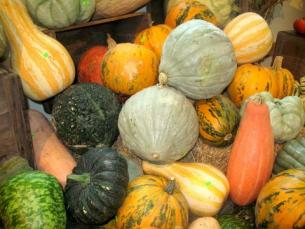
Can you spot the buttercup squash? If not, read on!
As autumn arrives, grocery stores and markets fill up with winter squash in all shapes and sizes. Acorn, butternut, buttercup, spaghetti … which one is which? And what do you do with them? This post will introduce you to some of the more popular members of the gourd family. Even if you don’t end up cooking with them, you can use them as seasonal decorations!

How to Choose Squash
Winter squash have tough, inedible skins. When buying winter squash, look for ones that are heavy and have smooth, un-dented skins with the stems still on. These are indications that the squash was harvested when ripe and will have more flavor. Winter squash contain lots of healthy nutrients, like Vitamin A, Vitamin C, potassium and fiber. Whole squash can be kept for up to a month, unrefrigerated, in a cool dry location.
Preparing Winter Squash
Most squash varieties can be baked, boiled, steamed and sautéed, but they each have different tastes and textures. Particular cooking techniques are better suited to some than others – don’t try making butternut squash soup with spaghetti squash!
To prepare squash, start by washing it off and drying it. The next step will depend on how you want to use the squash and whether you have a good, sharp knife.
Option 1. Cut the Squash Before Cooking: Peeling squash is not easy, which is why some people roast squash unpeeled. You can peel the squash with a vegetable peeler (as shown it this video) or with a knife. Then you can cut it in half, scoop out the seeds and cut the flesh into whatever size pieces you need. Or, you can simply cook the two peeled/scooped-out halves in the oven (at 400F for about 40 minutes) or the microwave (calculating two minutes of cooking time per pound of squash).
Option 2. Partially Cook the Squash Before Cutting: If the squash is too hard to cut, try microwaving it for a minute or two, or boiling it for five minutes. You’ll have to let it cool and then try to cut it.
Option 3. Cut the Squash After Cooking: Another way to avoid cutting a raw squash is to bake it whole. Pierce the squash in several places (using a fork or sharp knife) to let air escape, then bake it at 400F for about an hour. (If you do not pierce the squash it may EXPLODE in the oven!) Once it has cooled, you can cut it in half, scoop out the seeds and either cut the skin off or scoop out the flesh. This is a great method to use if the squash is going to be pureed for a side dish or soup.
Option 4. Roasting squash: Once you have cut the squash in half and scooped out the seeds you can roast it. Preheat the oven to 400F and drizzle the squash halves with some olive oil, salt and pepper. Put them cut-side down on a baking sheet, and roast for about 40 minutes.
Kathy roasted all the squash she photographed, shown below cut-side down…

…then turned each piece over to check that it was done.
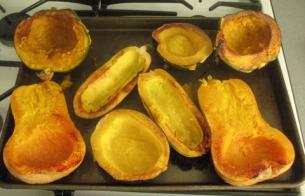
Now, let’s find out who’s who in the squash family!
Butternut Squash (shown below)
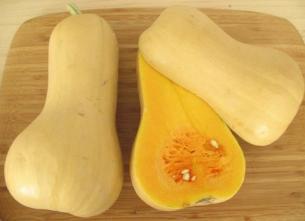
Butternut squash is one of the most popular varieties because of its sweet, rich taste and beautiful orange color. These creamy-skinned squashes have a bulb-shaped end that contains the seeds. Butternut squash can be served pureed with apples or as the made into butternut squash soup. Here’s a video that demonstrates maple-glazed butternut squash, a delicious and simple side-dish that calls for a quarter cup of rum. You can also use plain baked butternut squash as a side dish, salad or pasta topping.
Buttercup Squash (shown below)
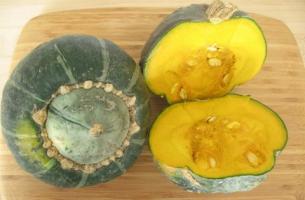
Buttercup squashes are round and flat in shape and often have dark green skins. Although their flavor is similar to that of butternut squash, they’re not as sweet and they have a drier texture. They work well in many of the same recipes as butternut squash. Here’s a recipe for Brandy-Laced Squash Soup with Cinnamon and Bay Leaves.
Spaghetti Squash (shown below)
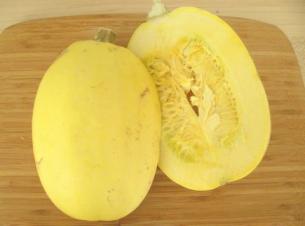
These oval-shaped squash produce stringy flesh that can actually substitute for pasta. (It looks like pasta but tastes like watery summer squash!) The flavor is mild, so you can serve it with a pasta sauce or parmesan cheese, or even just a little olive oil, salt and pepper. Kathy explains how to cook and serve basic spaghetti squash, or try this Mediterranean version.
Acorn Squash (shown below)
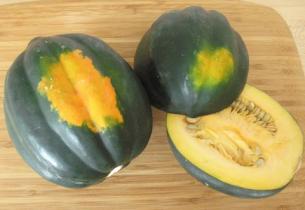
Shaped like (you guessed it!) acorns, and typically dark green on the outside, this type of squash tastes great baked. Its nutty flesh is a bit drier than that of other squash varieties. You’ll often see recipes for stuffed acorn squash, because an acorn squash half makes an attractive, edible bowl.
Delicata Squash (shown below)
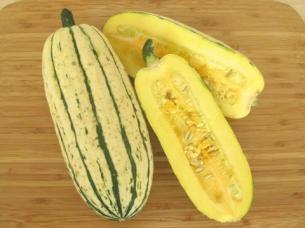
These long, cylindrical squash are also known as sweet potato squash because their creamy flesh resembles that of a sweet potato. They can be used in many recipes that call for butternut or buttercup squashes or sweet potato. Here’s a recipe for Delicata Squash and Gruyere Dip.
Pumpkin (shown below)
While these bright orange globes are the most sought after of the squash family, they get carved for Halloween more often than eaten. The size of pumpkins makes them a bit difficult to handle in the kitchen, which is why there’s a marvelous invention called canned pumpkin. Kathy makes use of pumpkin puree in her Pumpkin Soup Without the Fuss and in her Pumpkin Pie for Beginners.
Summer Squash (shown below)
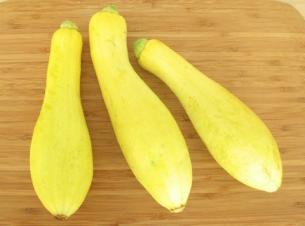
Yellow summer squash (shown above) and green zucchini (shown below) are also part of the gourd family. We have already covered how to prepare zucchini and yellow-skinned summer squash can be prepared in many of the same ways. Here’s a recipe specifically for summer squash.
If you are new to startcooking, or are a regular visitor here, please consider subscribing for free.




























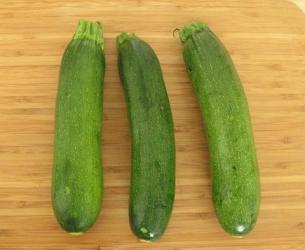
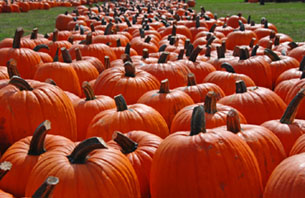


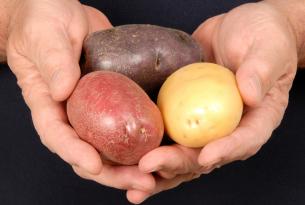
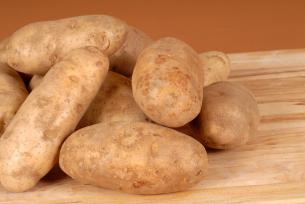
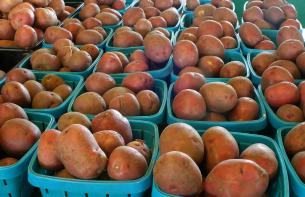
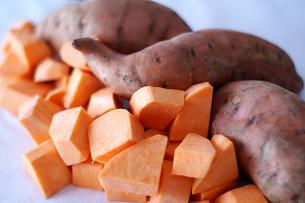
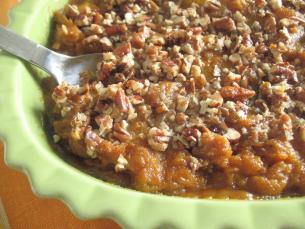
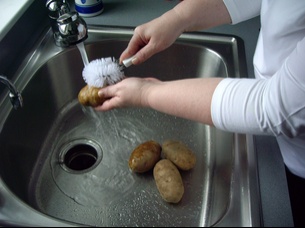 Wash them under running water, scrubbing the surface of the skin with a brush, or vigorously with your hands. Don’t use soap, though.
Wash them under running water, scrubbing the surface of the skin with a brush, or vigorously with your hands. Don’t use soap, though.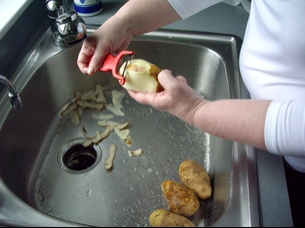 Depending on how you’re using potatoes, you may want to peel them. If you want to remove the skin before cooking, simply use a vegetable peeler and peel from one end of the potato to the other.
Depending on how you’re using potatoes, you may want to peel them. If you want to remove the skin before cooking, simply use a vegetable peeler and peel from one end of the potato to the other.











